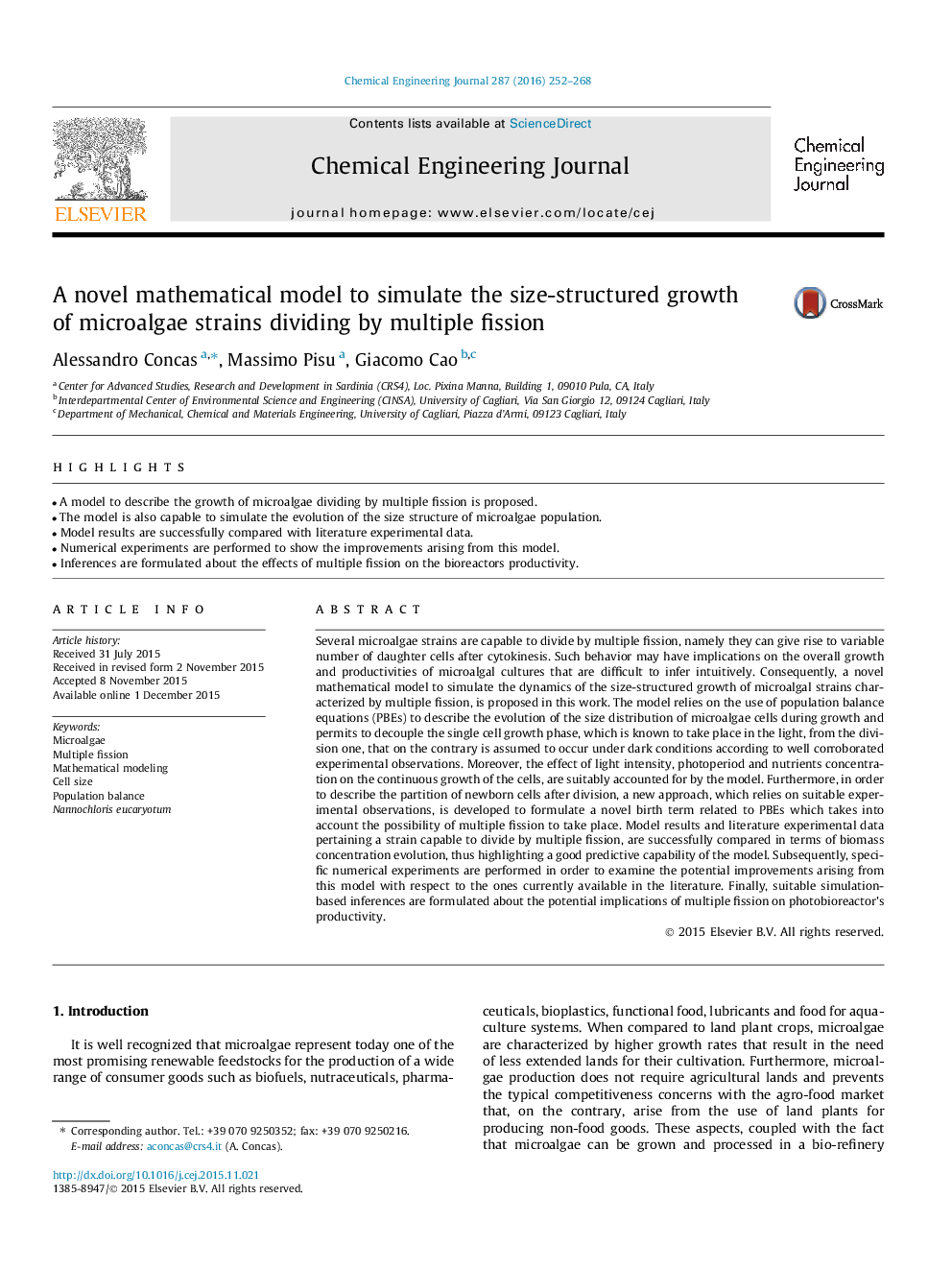| کد مقاله | کد نشریه | سال انتشار | مقاله انگلیسی | نسخه تمام متن |
|---|---|---|---|---|
| 145884 | 456354 | 2016 | 17 صفحه PDF | دانلود رایگان |
• A model to describe the growth of microalgae dividing by multiple fission is proposed.
• The model is also capable to simulate the evolution of the size structure of microalgae population.
• Model results are successfully compared with literature experimental data.
• Numerical experiments are performed to show the improvements arising from this model.
• Inferences are formulated about the effects of multiple fission on the bioreactors productivity.
Several microalgae strains are capable to divide by multiple fission, namely they can give rise to variable number of daughter cells after cytokinesis. Such behavior may have implications on the overall growth and productivities of microalgal cultures that are difficult to infer intuitively. Consequently, a novel mathematical model to simulate the dynamics of the size-structured growth of microalgal strains characterized by multiple fission, is proposed in this work. The model relies on the use of population balance equations (PBEs) to describe the evolution of the size distribution of microalgae cells during growth and permits to decouple the single cell growth phase, which is known to take place in the light, from the division one, that on the contrary is assumed to occur under dark conditions according to well corroborated experimental observations. Moreover, the effect of light intensity, photoperiod and nutrients concentration on the continuous growth of the cells, are suitably accounted for by the model. Furthermore, in order to describe the partition of newborn cells after division, a new approach, which relies on suitable experimental observations, is developed to formulate a novel birth term related to PBEs which takes into account the possibility of multiple fission to take place. Model results and literature experimental data pertaining a strain capable to divide by multiple fission, are successfully compared in terms of biomass concentration evolution, thus highlighting a good predictive capability of the model. Subsequently, specific numerical experiments are performed in order to examine the potential improvements arising from this model with respect to the ones currently available in the literature. Finally, suitable simulation-based inferences are formulated about the potential implications of multiple fission on photobioreactor’s productivity.
Journal: Chemical Engineering Journal - Volume 287, 1 March 2016, Pages 252–268
